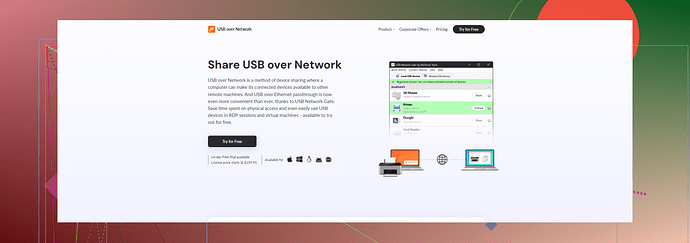I’m having trouble getting my USB device to connect to my VirtualBox VM. I’ve tried numerous settings but still no luck. Can someone guide me on how to properly set this up?
Alright, here’s how you can passthrough a USB device in VirtualBox. I’ve had my fair share of headaches over this too, but once you get the hang of it, it’s not too bad. Follow these steps:
-
Install VirtualBox Extension Pack: Ensure you’ve installed the VirtualBox Extension Pack that matches your VirtualBox version. This is crucial because it adds support for USB 2.0 and USB 3.0 devices.
-
Enable USB Controller: In your VirtualBox Manager:
- Click on your virtual machine (but don’t start it yet).
- Go to the Settings option.
- Navigate to the USB section.
- Check the box next to ‘Enable USB Controller.’
- Select either USB 2.0 or USB 3.0 (I’ve had better luck with USB 2.0 for older devices).
-
Add your USB Device:
- Click on the small USB+ icon on the right side.
- Select your USB device from the list.
- This adds it to the list of available USB devices for your VM.
-
Start the VM: Now start your virtual machine.
-
Device Capture: If the USB device doesn’t automatically connect, go to Devices → USB and select your device from the list. Sometimes, you’ll have to do this manually because it’s a bit finicky.
-
Check Permissions: Make sure your user has the necessary permissions to use USB devices. On Linux, you’ll often have to add yourself to the
vboxusersgroup:sudo usermod -aG vboxusers $USER
If you still can’t get it working, there could be other factors at play. I’d highly recommend checking out a detailed VirtualBox USB passthrough tutorial for more visual guidance.
Lastly, if you still hit a wall, consider something like USB Network Gate. It’s a nifty tool that can help share USB devices over a network, which might bypass some VirtualBox quirks.
Hope this saves you some of the frustration I went through!
Alright, I get where you’re coming from; getting USB devices to work in VirtualBox can be a real pain sometimes. @viajeroceleste already covered a solid step-by-step method to get you started, but let’s mix it up with a couple of additional tweaks that might smooth out the process for you.
First off, sometimes it helps to ensure that VirtualBox and the Extension Pack are completely up-to-date. Compatibility can be finicky, and an outdated version could be the culprit.
Here’s a different spin on the steps:
-
Check USB Filters:
- Open the USB section in the VM settings.
- Add a blank USB filter by clicking the USB+ icon but don’t select a specific device. This can sometimes help VirtualBox recognize any USB device you plug in without specifying which one upfront.
-
Update Guest Additions:
- Install the latest Guest Additions from the VirtualBox menu: Devices → Insert Guest Additions CD Image. This provides better integration and might help in recognizing USB devices more consistently.
-
Device Manager (Windows Hosts):
- Sometimes, your host OS might hog the USB device. Go to Device Manager in your host OS, find the USB device, and disable it within the host OS (don’t uninstall). This can free it up for the VM.
-
USB Device Connection Order:
- Try connecting your USB device before starting the virtual machine. Some users find it more successful than connecting it after the VM has started.
-
Alternative Method:
- If you’re still having trouble, consider using USB Network Gate. It allows you to share USB devices over the network which might bypass VirtualBox’s quirks.
Need Visuals? Check out this step-by-step guide: VirtualBox USB passthrough.
And about that USB Network Gate app solution, it’s pretty slick. It lets you connect USB devices over a network to any virtual machine, cutting through the sluggish native passthrough. Here’s where you can snag it: USB Network Gate.
Tinker with these and see if anything sticks. USB passthrough can be a bit of a dance, but with these steps, you’ll hopefully avoid smashing your computer out of frustration.
Alright, let’s dive into a few extra tweaks that might help you with passing through USB devices in VirtualBox. These aren’t covered by @viaggiatoresolare and @viajeroceleste, so hopefully, they offer a fresh perspective.
Few More Helpful Tips:
1. BIOS/UEFI Settings:
Make sure that virtualization technology (VT-x/AMD-V) is enabled in your BIOS/UEFI settings. Surprisingly, this can sometimes affect USB passthrough performance.
2. Different USB Ports:
Try using different USB ports on your host machine. Ports have different behaviors, especially USB 3.0 vs. USB 2.0.
3. Check Device Compatibility:
Ensure the USB device itself is fully compatible with VirtualBox. Some devices just don’t play nice with VMs due to driver issues or firmware quirks.
4. Third-Party Software:
If all else fails, you can consider using software like USB Network Gate which lets you share USB devices over the network. This means your VM can connect to USB devices as if they were locally attached, sidestepping some of VirtualBox’s limitations.
USB Network Gate Pros & Cons:
Pros:
- Bypasses many of the issues that native VirtualBox USB passthrough has.
- Can be used over a network, enhancing flexibility.
- User-friendly interface.
Cons:
- It’s a paid solution, might not be ideal if you’re looking for a free fix.
- Adds an extra layer of software, which could potentially introduce its own set of issues.
Remember, while USB Network Gate is reliable, its competitors like VirtualHere or FlexiHub also offer similar functions, so you might want to check them out too.
Quick Checklist:
- Ensure VT-x/AMD-V are enabled
- Experiment with different USB ports
- Confirm the device compatibility
- Consider USB Network Gate for a foolproof solution
USB issues with VirtualBox can be frustrating, but with a little patience and these steps, you should be able to get it working. Good luck!
